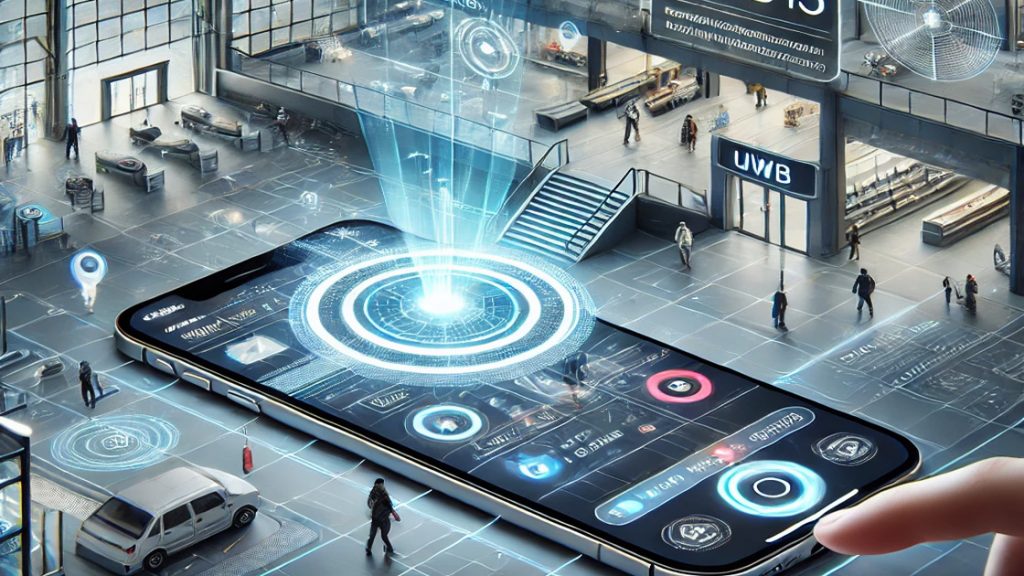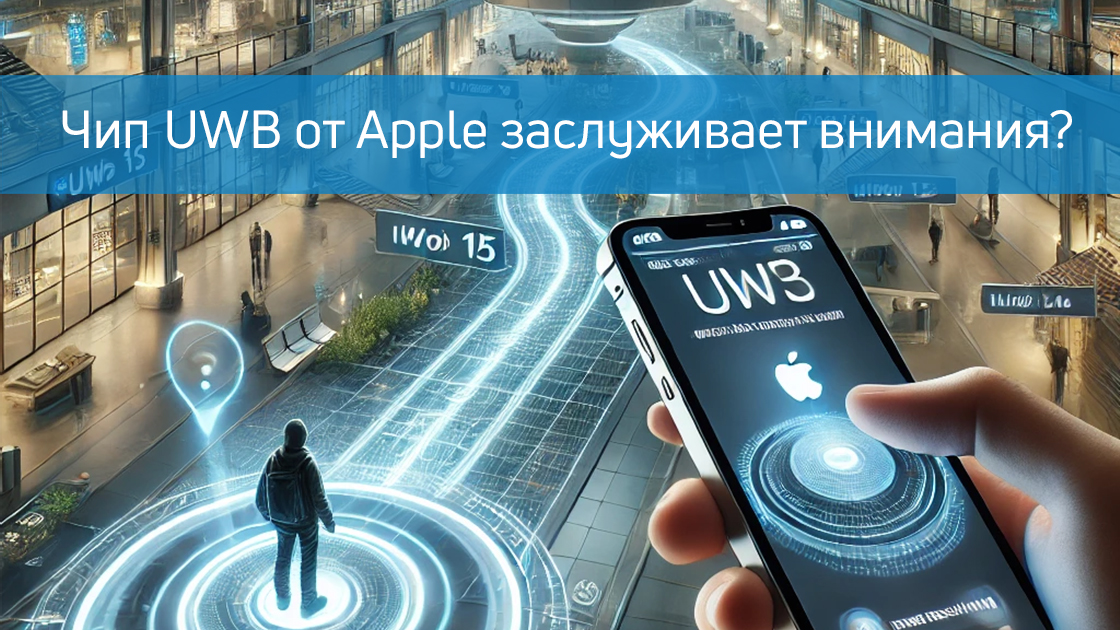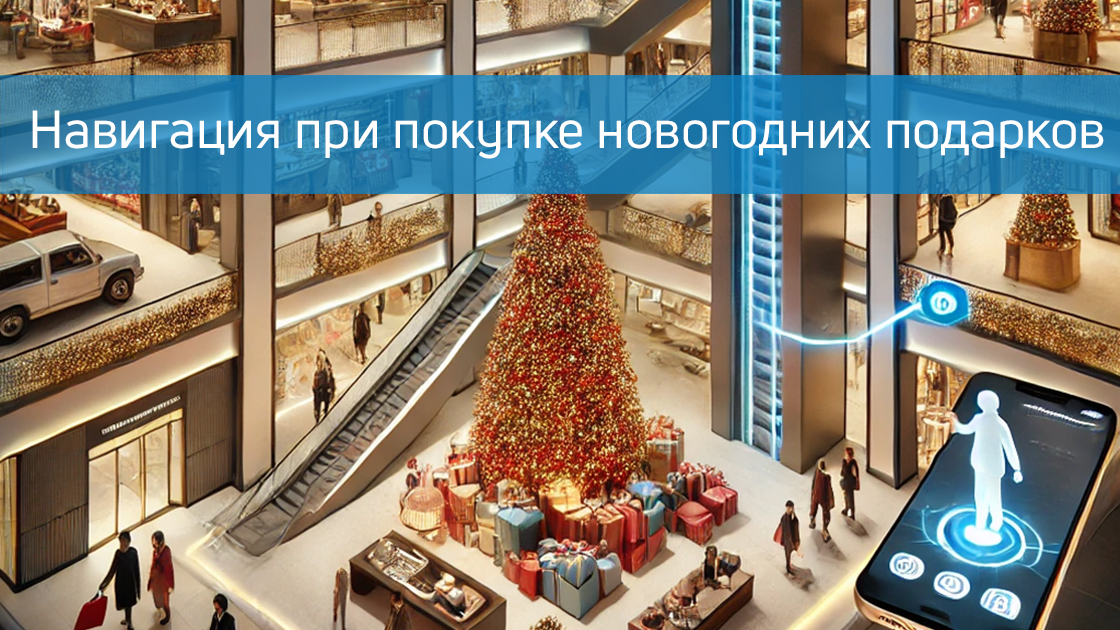Positioning and spatial interaction technologies are becoming more important to consumers and developers every year. One of the most discussed developments in this area has been the introduction of the second-generation ultra-broadband chip in the new iPhone 16 and Apple Watch Series 9. These devices open up new horizons for the use of UWB technology, offering improved features and capabilities.
In this article, we will look at why the second-generation UWB chip is of such interest, what prospects it opens up for users and developers, and how it can change the approach to positioning and interacting with devices.
Spatial interaction: a new era of possibilities
Многие пользователи iPhone даже не подозревают, что их устройства уже давно оснащены невероятной функцией, способной определять расстояние и ориентацию до других устройств. Эта «суперспособность» появилась еще в iPhone 11 благодаря первому поколению чипа UWB (U1).
How does it work?
The UWB chip uses radio signals in a wide frequency range (5-9 GHz), which practically merge with background noise. When the device interacts with other compatible devices, the chip measures the time it takes for the signal to reach the object and return back. This allows you to accurately determine the distance between devices – literally at the centimeter level.
Usage examples:
- AirDrop: Selects the device closest to it.
- Search for things with AirTag: pinpoint the location of lost keys or wallet.
- HomePod: Automatically switches the sound when entering a room.
UWB technology has already made the interaction between Apple devices more intuitive and convenient. However, with the advent of the second-generation chip, even more opportunities await us.
Energy efficiency and productivity: advantages of the new generation
The second-generation UWB chip was created based on a 7nm process technology (instead of the 16nm in the previous version). This means that it has become more compact, consumes less energy and provides higher performance.
Why is reducing energy consumption so important?
- Durability of devices:
Devices with UWB, such as AirTag, will be able to work for up to 2-3 years on a single battery, which significantly increases their service life. - Support for continuous interaction:
Due to the low power consumption, UWB devices can be constantly active, providing smoother interaction without the need for frequent charging. - New usage scenarios:
The reduced power consumption makes the technology more versatile and suitable for devices with limited resources, such as compact sensors or wearable gadgets.
Range expansion
Apple заявила о 3-кратном увеличении диапазона действия UWB-чипа второго поколения. Это означает, что устройства могут взаимодействовать на больших расстояниях, предоставляя пользователям новые возможности. Например, функция точного поиска в приложении «Локатор» теперь может использоваться для обнаружения друзей или устройств в более широком радиусе.

Indoor positioning: security and privacy
One of the promising applications of the new UWB chip is positioning technology in enclosed spaces. Traditional systems such as GPS do not work in tunnels, buildings, or underground parking lots. This is where ultra-broadband using TDoA Downlink technology (signal arrival time difference) comes to the rescue.
How does it work?
UWB beacons transmit signals to the user's phone. The device receives them and calculates its location based on the difference in the arrival time of the signal from different beacons. At the same time, no data is transmitted from the phone, which ensures a high level of privacy.
Usage examples:
- Tunnels and underground parking: determining the location of a car in the absence of GPS.
- Торговые центры — навигация по этажам и поиск нужного магазина.
- Аэропорты — помощь пассажирам в поиске выхода на посадку или багажа.
- Музеи — создание интерактивных маршрутов для посетителей.
This approach ensures accurate positioning with minimal risk of data leakage, making it attractive to privacy-conscious users.
Spatial computing and new devices
UWB technology may become a key element of future Apple devices, including Vision Pro. These smart glasses use computer vision to navigate in space, but integrating a UWB chip could significantly reduce power consumption, which is especially important for wearable devices.
The prospects:
- Compact devices: Energy saving allows you to create lighter and more convenient smart glasses.
- Ecosystem Integration: UWB can interact with other devices, creating a more connected user experience.
New UWB Usage Scenarios
1. Access control and contactless authentication
Using UWB, you can completely dispense with keys and access cards. For example:
- Entering the hotel room without a key: the door recognizes the device and opens automatically.
- Workplace access: Devices with UWB identify an employee and provide access to computers or equipment.
2. Determining the movement and orientation of objects
UWB allows devices to analyze reflected signals to determine the movement and shape of objects. This could find applications in robotics, security, and even sports analytics.
3. Device synchronization
Accurate distance and orientation data allows devices to interact with each other on a new level. For example, speakers and headphones can automatically switch between each other depending on the distance to the user.
Finally
The ultra-broadband UWB technology embedded in Apple's second-generation chip opens a new chapter in spatial interaction. Higher performance, energy efficiency, and enhanced positioning capabilities make this technology key to the future of smart devices.
From precise indoor positioning to contactless authentication, UWB is already changing our understanding of how modern technology should work. And with further development, we will no doubt see even more amazing possibilities of this technology.
Indoors Navigation continues to follow the development of UWB technologies in order to use them in its products and provide customers with the most innovative navigation and positioning solutions.
Technology application UWB For navigation, you can explore the Indoors Navigation website.




